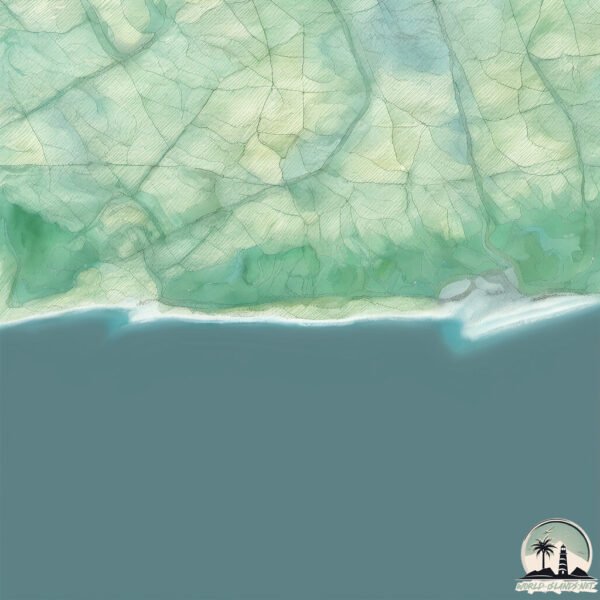Welcome to Long Beach , a Temperate island in the North Atlantic Ocean, part of the majestic Atlantic Ocean. This guide offers a comprehensive overview of what makes Long Beach unique – from its geography and climate to its population, infrastructure, and beyond. Dive into the details:
Geography and size of Long Beach
Size: 26.7 km²Coastline: 125.7 kmOcean: Atlantic OceanSea: North Atlantic OceanContinent: North America
Long Beach is a Medium Island spanning 27 km² with a coastline of 126 km.
Archipel: –
Tectonic Plate: North America – Covers North America and parts of the Atlantic and Arctic Oceans, characterized by diverse geological features and varying levels of seismic activity.
The geographic heart of the island is pinpointed at these coordinates:
Climate and weather of Long Beach
Climate Zone: TemperateClimate Details: Humid Subtropical ClimateTemperature: Hot Summer
Climate Characteristics: With continuous rainfall and hot summers, this climate is common in some coastal regions, supporting diverse vegetation.
Topography and nature of Long Beach
Timezone: UTC-05:00Timezone places: America/New_YorkMax. Elevation: 4 m Mean Elevation: 1 mVegetation: WetlandTree Coverage: 81%
The mean elevation is 1 m. The highest elevation on the island reaches approximately 4 meters above sea level. The island is characterized by Plains: Flat, low-lying lands characterized by a maximum elevation of up to 200 meters. On islands, plains are typically coastal lowlands or central flat areas.
Dominating Vegetation: Wetland
Vegetation: 8 vegetation zones – Very Highly Diverse Island
Infrastructure and Travelling to Long Beach
Does the island have a public airport? no .
Does the island have a major port? yes .
The mean population of Long Beach is 384 per km². Long Beach is Moderately Inhabited. The island belongs to United States of America .
Continuing your journey, Brigantine is the next notable island, situated merely km away.
Luxury Home Markets in New Jersey: Long Beach Island | Prodigy
(718) 701.5626 | ProdigyRE.com | Long Beach Island (LBI) is located on the Atlantic coast of New Jersey and is known for its ...
Luxury Home Markets in New Jersey: Long Beach Island | Prodigy
(718) 701.5626 | ProdigyRE.com | Long Beach Island (LBI) is located on ...
(718) 701.5626 | ProdigyRE.com | Long Beach Island (LBI) is located on the Atlantic coast of New Jersey and is known for its ...
Long Beach Island, New Jersey | TOP 5 THINGS TO DO
It's hard to describe what makes Long Beach Island, NJ so special ...
It's hard to describe what makes Long Beach Island, NJ so special because it's intangible. It's the quaint down to earth charm ...
Beached Bluefin Tuna thrashing in the surf on Long Beach Island NJ #tuna
It's not often that you see a bluefin tuna on the beach alive and ...
It's not often that you see a bluefin tuna on the beach alive and thrashing. Reports we got shared that there is bunker, whale and ...
United States of America is classified as Developed region: G7: Group of Seven – Major advanced economies, including Canada, France, Germany, Italy, Japan, the United Kingdom, and the United States. The level of income is High income: OECD.
News – Latest Updates and Headlines from Long Beach
Stay informed with the most recent news and important headlines from Long Beach. Here’s a roundup of the latest developments.
Loading...
Please note: The data used here has been primarily extracted from satellite readings. Deviations from exact values may occur, particularly regarding the height of elevations and population density. Land area and coastline measurements refer to average values at mean high tide.

